
Over the past few years, I’ve lost count of the number of emails I get about dealing with biting dogs. So today, I want to touch base on one of the more common questions I had recently, which is… “How exactly do I stop my dog biting?”
It’s sad to say, but we don’t live in a perfect world. And while we’d all like nothing more to own a well-behaved pooch, the fact is that it’s not always going to be as smooth sailing from the get-go.
Now, nobody wants to deal with an overly nippy dog.
But unfortunately, it happens so often that it can feel like a constant battle to make sure your dog isn’t constantly on the offensive.
Not only that, but it can put a huge strain on the relationship you have with your dog, which can often result in expensive training or in worst cases, even rehoming them.
I speak from personal experience when I say that nobody deserves to go through this frustration. So it’s essential to try and steer your dog away from this frustrating behavior before the unthinkable happens.
But here’s the problem…
Hiring a trainer can be very expensive, and to be honest, you don’t really need to.
I’ll explain how in a minute. First, let me talk about WHY your dog seems to be so hard to train…
See, the reason you are having so much difficulty training your dog is that you’ve been training them the outdated way.
It’s not your fault though. The fault really lies with all the bad dog training information that’s out there on the Internet and elsewhere.
Most people start training their dogs using verbal cues or commands like SIT, STAY, etc. Because that’s what they have been taught to do by numerous books on dog training and by all the videos they’ve seen on the Internet.
Here’s the problem – that’s exactly how NOT to train a dog!
Why?
Because the science of animal behavior says that starting your training using verbal cues sets your dog up for failure.
Dogs that are trained only using verbal cues never get trained properly. Or at least, the training doesn’t last long.
So what’s the best way to train a dog?
The science is very clear on this – dogs are best trained by using body language. Now, this doesn’t mean that you should never use verbal cues. What it means is that you should always START your dog’s training using body language. Later on, you can bring in a verbal cue to reinforce your dog’s training.
Let me give you an example of how this works…
One of the biggest mistakes most dog owners make is that they don’t give their dogs work to do.
And this is one of the many reasons that certain dogs (ie. service dogs) are so well-behaved.
Now, by “job” or “work”, I don’t mean that a service dog is always doing something physical in nature.
Instead, what I mean is that when you give a service dog the hand signal for the DOWN cue for instance, here’s how the service dog would have been trained to think:
“My owner has now given me the job of lying down. So I will remain lying down here in this exact spot until my owner tells me to do something else because the job that my owner wants me to do for her now is to lie down.”
So unlike most “normal” dogs who think of DOWN as just a trick that they have to perform for a few seconds after which they can do whatever they feel like, service dogs think of DOWN as a serious job that they have to do with commitment, dedication, and purpose until they get their next job from their owner.
As you can imagine, it’s a dramatically different mindset!
And this mindset is the reason service dogs are so well-behaved, and so many “normal” dogs (even if they know cues like DOWN or SIT) are not.
The good news is that you can train your dog to have the same mindset as a service dog as well.
And when you get this part right, training your dog to stop biting becomes effortless.
So here’s the deal…
If you want to learn the secret to stop your dog biting, while teaching them to have the same mindset as a service dog, the first thing I’d recommend doing is checking out K9ti’s free online dog training workshop.
Just to give you a little more insight, this free online dog training workshop goes into extensive detail on the best practices and techniques to stop your dog biting by helping your dog develop the same level of calmness, obedience, and impulse control as service dogs.
It’s presented by Eric Presnall (host of the hit Animal Planet TV show “Who Let the Dogs Out”) and Alexa Diaz (one of the top service dog trainers in the U.S.)
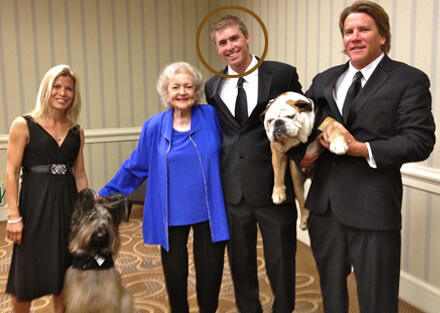
The techniques described in the workshop have been a complete game changer for myself and thousands of other frustrated owners who implemented the techniques inside this free workshop.
This is because for the first time (at least that I know of) anyone has revealed the secret techniques used by the service dog training industry to train service dogs.
The best part?
These techniques work on ANY dog… regardless of age or breed.
From small breeds like Pomeranians and Chihuahuas to large breeds like English Mastiffs and Great Danes.
Even puppies as young as 6 weeks old, and untrained adult dogs as old as 13 years, have been successfully trained using the techniques inside this free workshop.
It’s not a live workshop – it’s actually pre-recorded, which means that you can watch it as many times as you like.
However, while the workshop is free, I am not sure how long it’s going to stay that way, so I’d recommend checking it out while it’s still available.
So if you want to discover how to stop your dog biting in minutes, using the same tools and techniques that service dog trainers use to train service dogs, go ahead and click the link below to register for the workshop…
Click Here To Watch The Free Workshop & Discover How To Stop Your Dog Biting In Minutes… Using The Same Secrets The Pro’s Use To Train Service Dogs!
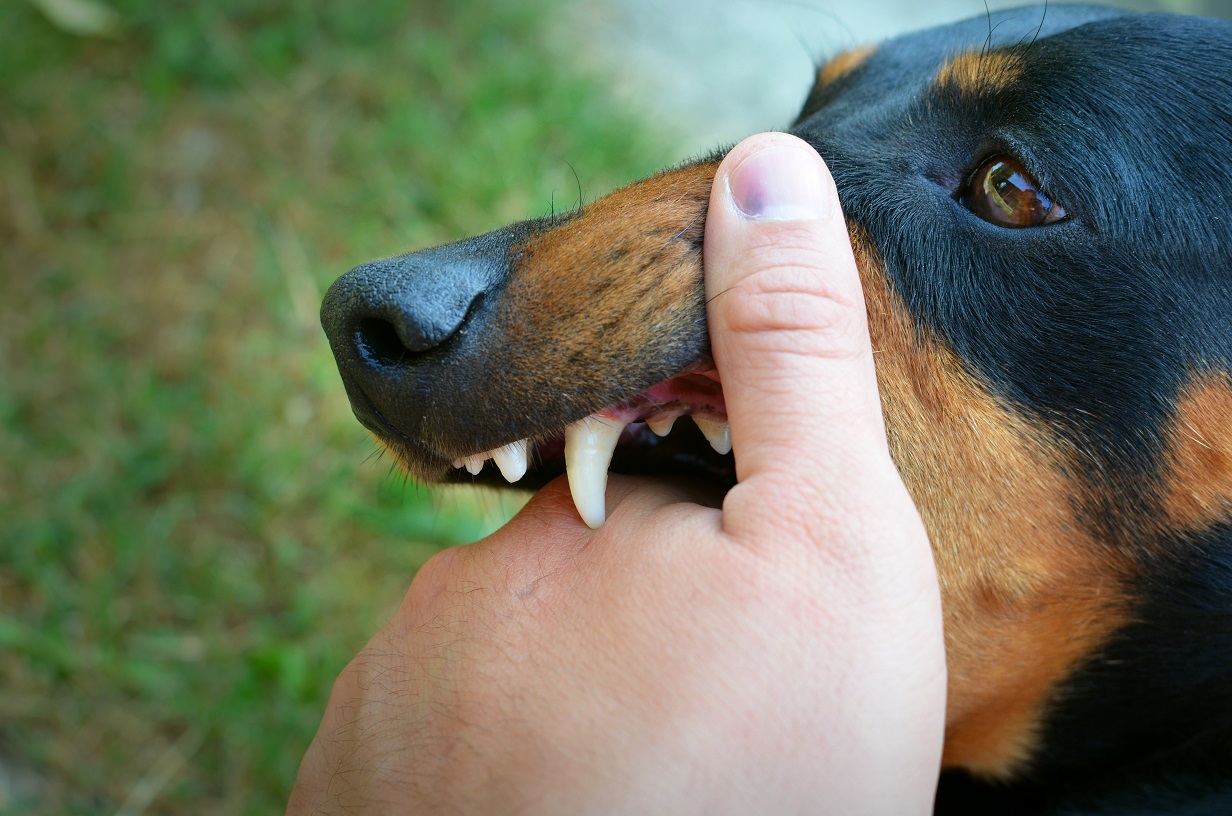
Why Does My Dog Keep Biting?
In some ways, biting is the most natural thing in the world.
Ultimately, it’s how your dog explores new tastes and textures.
While we express ourselves by yelling or getting upset, dogs use other ways.
They growl they bark, they bite… they communicate.
The problem is, it’s a style of communication that’s not always appreciated. It’s especially not appreciated when it’s allowed to go unchecked.
And therein lies the problem.
The occasional nip from your dog might be annoying, but depending on the circumstances, it’s not necessarily dangerous.
But a dog that’s allowed to get away with could soon flip the script and eventually decide to go on the offensive. And that’s when the real problems start.
Even a dog that never acts on certain aggressive behavior needs to be taught to stop. After all, a playful nip is one thing: a full-force bite is quite another.
The point here is that ALL biting behaviors need to be treated as equal.
Basically, it all needs to be discouraged.
That said, treating your dog as an individual by figuring out the root cause of their behavior is going to be crucial in determining the right modification technique.
A dog who bites because they’re scared, for example, may need to be treated quite differently from a dog who bites because they’re protective.
Before jumping to the solution, take a moment to consider what could be motivating your dog’s behavior.
Some of the most common reasons include:
They Want to Play
Puppies and dogs don’t want to be cuddled all day long. They want to play.
So if you do anything to suggest a game (stroke them, clap your knees as though initiating a game, etc.), up goes the excitement, and down come the teeth.
And with this comes unpredictability and in some cases, unwanted aggression.
You need to keep in mind that what often starts as play can soon escalate into an unsafe level of aggression depending on your dog’s nature.
And once that fight or flight response kicks in, you’ll be hard pushed to dial things down and regain control of the situation.
They Haven’t Been Socialized
Sometimes, biting could be a sign that they’ve not been properly socialized.
If dogs aren’t exposed to a wide variety of people, pets, and situations from an early age. They can become anxious or fearful around anything unfamiliar.
Unfortunately, fear and anxiety can often translate into displays of aggression.
The problem is particularly apparent in pups who’ve experienced abuse or traumas in the past. As well as dogs who’ve spent most of their lives being passed from one temporary home to another.
Once dogs like this find a ‘safe-haven,’ they may feel the need to defend it against threats.
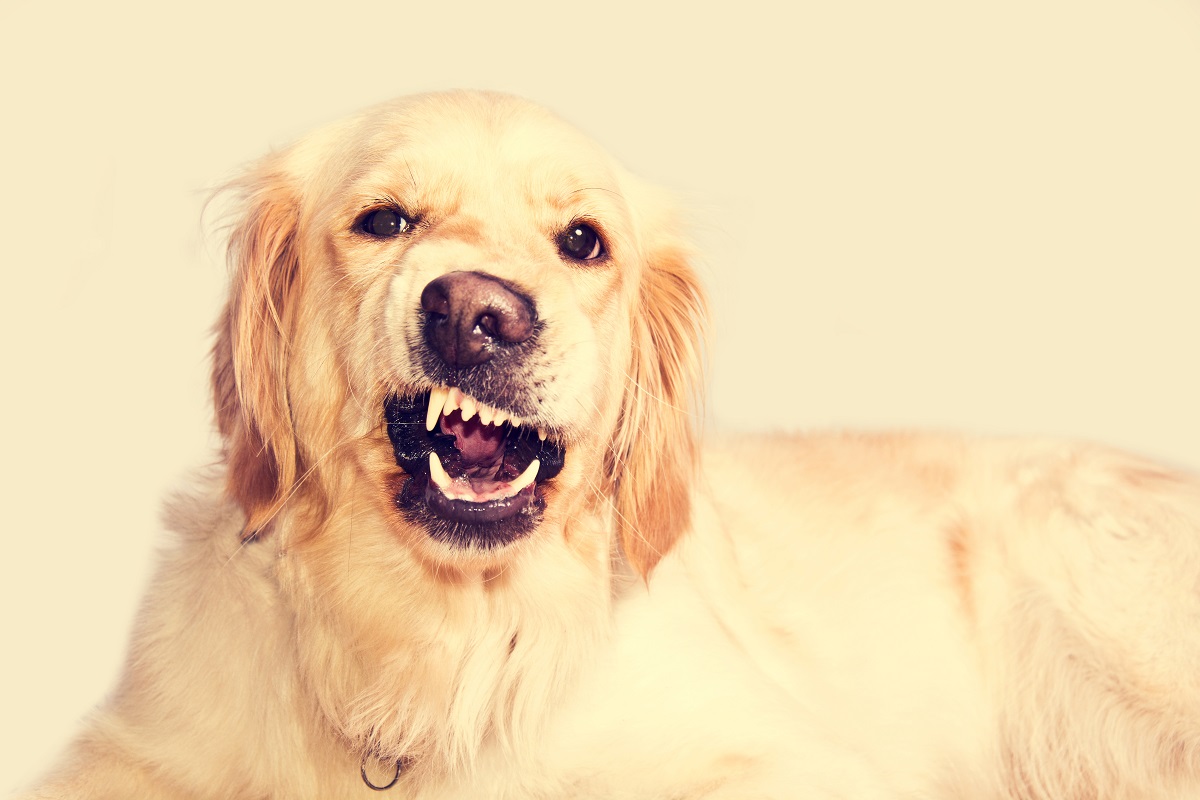
They’re Possessive
All dogs are possessive to an extent (as are humans, when you think about it) but left unchecked, it can quickly develop into a problem.
While some dogs can get super possessive about high-value items like toys or food. Others can get possessive about people.
If your dog thinks they ‘own’ you. They may become aggressive or display other undesirable behaviors at anyone who gets in between you and them.
It’s in Their Genes
Herding breeds like Corgis, Collies, and German Shepherds have a higher risk of biting than other breeds.
The reason is simple enough. As working dogs, their function was to herd sheep and cattle. Nipping and biting at the heels of the animals was the easiest way of getting them to move.
That instinct is still there… even though it’s a lot less useful than they think it is.
It’s a Habit
It’s not uncommon for some owners to give in and just accept that aggression is part and parcel of being a dog.
Eventually, they come to the conclusion that biting, nipping, and other aggressive behavior is just part of the game.
Some owners may even be encouraging the behavior unknowingly.
To make matters worse, an untrained dog often can’t tell the difference between what is and isn’t acceptable.
This is a huge problem, especially with larger, powerful breeds such as Rotties, Dobermans, German Shepherds to name a few.
This is also where the techniques discussed inside the K9ti’s free online dog training workshop really come in handy.
Not only will you learn how to stop unwanted behaviors like biting, but you’ll also discover simple, highly effective calming exercises to keep your dog’s emotions in check.
So if you haven’t had a chance to watch the training, now would be the time…
Click Here To Watch The Free Workshop & Discover How To Finally Stop Your Dog’s Frustrating, Annoying Biting Habit… Using The Same Secrets The Pro’s Use To Train Service Dogs!
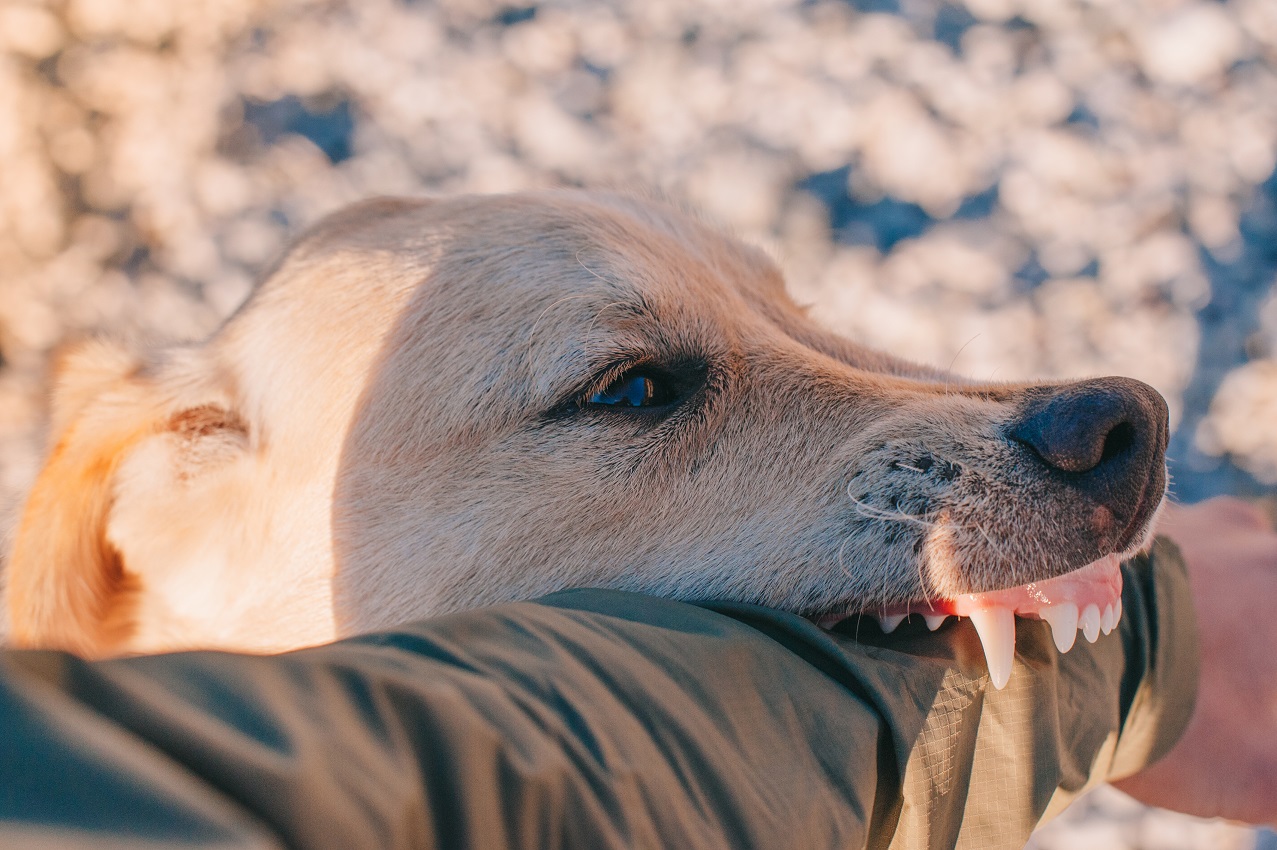
How to Spot the Signs of Aggression
Many types of biting and nipping can be passed off as a general warning.
But some types aren’t.
For instance, if a dog happens to nip or bite out of fear and frustration and it isn’t managed appropriately. This same nip can easily escalate into aggression.
Worse still, recognizing the difference between a playful nip and one that’s intended as a ‘warning’ isn’t always easy.
That said, there are a few telltale signs that give the game away.
When a dog is showing aggression, they tend to adopt a stiff, rigid posture. They may tense their muzzle and curl their lips to expose their teeth.
However, dogs who simply want to play will have a loose, relaxed posture.
Both may growl. But whereas a low-pitched, guttural growl is a sign of aggression, a high-pitched, sharp bark is a sign of play.
How to Stop Aggressive Biting
Before you can dial down your dog’s aggression, you need to identify the root cause.
Although any kind of aggression should be discouraged, different motivations need different treatment.
Consider factors like your dog’s age, whether the biting is generalized or happens only around guests, and whether your dog displays any other fearful or aggressive behaviors.
When it comes to training, you need to think about the big picture. It might be frustrating when your dog starts demonstrating undesirable behaviors. But the problem is still the biting, not the person or thing that’s causing it.
If you want to address the problem, you need to address the problem, period.
For instance, trying to stop your dog from biting on walks isn’t going to work if you let them get away with it at home.
Remember, dogs respond to consistency. So be mindful to keep working on discouraging negative behaviors (whether they’re aggressive or not) and encouraging positive ones.
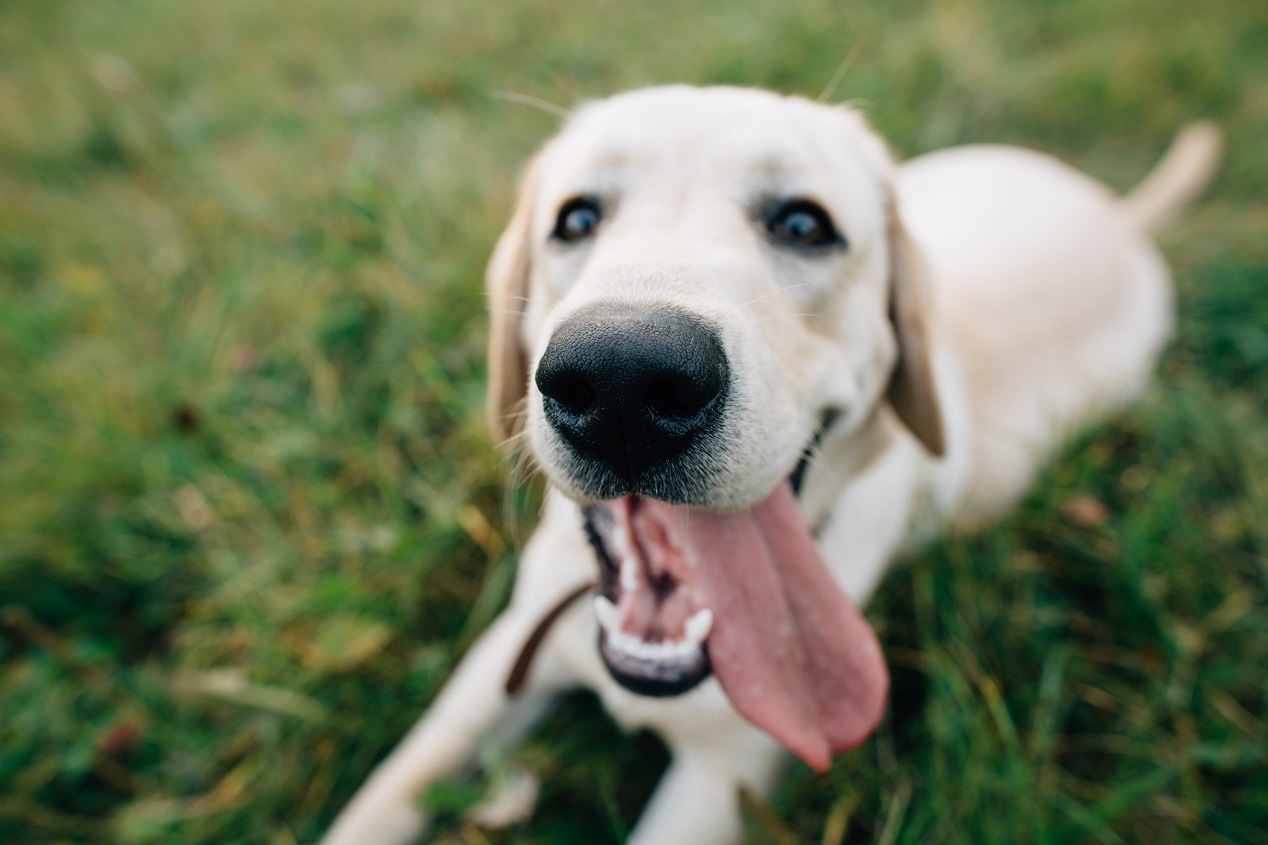
Avoid Provocative Games
Dogs can often become aggressive and bite due to boredom or stress, so finding a new outlet for their energy is crucial.
Avoid playing games that encourage biting (roughhousing, etc). And stick to games that allow your dog to let off some steam without engaging in any undesirable behaviors.
Dial Back Aggressive Play
If your dog has a habit of biting during play, you need to set boundaries of what is and isn’t acceptable.
To make things easier, avoid doing things that initiate aggression. Patting the sides of their face, playful nudges, or again, ‘roughhousing’ will just perpetuate the idea that biting is part of the game.
If they do end up getting riled you while you’re playing, avoid escalating the situation. End the game and take a few minutes to let your dog calm down and relax.
It may seem obvious, but it’s a sure-fire way to dial down the emotion.
Teach Them Emotional Control
If you’re ready to put an end to your dog’s annoying biting habit, the first logical step is teaching your dog to be calm and in control of their emotions.
Why?
Because if you can effectively teach your dog to relax, you’ll also find they’ll be a lot less likely to bite in any type of situation that triggers it.
So before you do anything else, I’d highly recommend taking a few minutes to check out K9ti’s free online dog training workshop. (see link below)
Not only will this workshop help your dog remain calm and in control. It’ll also teach them to become highly responsive and obedient while reducing their natural tendency to bite.
While it won’t do all the hard work for you. I guarantee that if you watch the training and apply the techniques Alexa recommends to your dog’s routine, you’ll be well on your way to changing their behavior for the better.
Click Here To Watch The Free Workshop & Discover How To Finally Stop Your Dog’s Frustrating, Annoying Biting Habit… Using The Same Secrets The Pro’s Use To Train Service Dogs!
Here’s What You’ll Learn Inside This Free Workshop
In the free workshop, you’ll discover:
– The secret methods that service dog trainers use to housebreak dogs
So that your dog never has accidents inside your house ever again.
– How service dogs are trained to never bark out of excitement
Contrary to what many people believe, you CAN’T stop a dog from letting you know that someone has come to your front door – they are simply hard wired for it. Instead, find out the “QUIET WAY” that you can teach your dog so that it still gets to alert you to strangers – without barking even once.
– Why service dogs behave so well when walking on the leash without pulling
So that you can leash train your dog just like a service dog.
– How service dogs are trained to ALWAYS come when called
So that your dog too will come back to you the moment you say its name in the dog park or anywhere else (no matter what it might have been doing at that time).
– How the pros train their dogs to stop jumping on people
So that your dog learns to calmly greet people who come over to your house.
– The secret methods that service dog trainers use to train their dogs to tune out distractions
So that your dog stays calm and doesn’t react at all when passing by other dogs.
– How service dog trainers train their dogs mainly using body language
So that you can get your dog’s attention in public situations without having to raise your voice or use verbal commands.
– How service dogs do more than follow commands – they read their human partners in demonstrable and extraordinary ways
And how your dog can too!
– Why the training techniques that work on service dogs also work on dog breeds that are typically not thought of as service dogs
This means that these techniques will work on your dog even if it’s a breed – like a Chihuahua, Rottweiler, Akita, etc. – that is usually not considered a breed suitable for being a service dog.
Click Here To Watch The Free Workshop & Discover How To Finally Stop Your Dog’s Frustrating, Annoying Biting Habit… Using The Same Secrets The Pro’s Use To Train Service Dogs!
What Others Are Saying About The Free Workshop
“Guess what, my Chihuahua is completely housebroken now! I used to have so much difficulty getting Frankie to not do his business all over my house. I used your methods to housetrain him and it has worked wonders on him!”
– Amanda Silver from Glasgow, Scotland
———-
“I used your tips to start training my Yorkshire Terrier puppy Grace a few weeks after I got her. With just a few days of training, I have managed to get Grace to come when called and stop pulling on her leash.
She is also completely housebroken now. I am so happy I discovered your site. I have had other dogs in the past, but none of them were as easy to train as Grace has been thanks to your site.”
– Cassandra Wallace from Scranton, Pennsylvania
———-
“My beautiful Doberman Sophie was completely out of control. With your workshop, I learned how to make it obvious to her what was not acceptable.
And she got it too. Amazing results.”
– Gina Meyer (Sophie’s Mom) from Galveston, Texas
———-
“I rescued a 3.5 year old German Shepherd from the shelter a few months ago. The poor thing had not been trained properly by his previous owners and was quite aggressive and skittish and used to bark for no reason at all.
I came across your site while searching for ways to train him and am so glad I did. Thanks to your workshop, he is now a lot calmer and friendlier towards everyone and the barking has almost completely stopped now.”
– Matt Jenson from Rockford, Illinois
———-
“I wanted to pass along a sincere thank you for helping out so much in Milo’s first year. He is almost 2 now and incredibly well-behaved.
I am incredibly grateful for your guidance and help. Thank you again!”
– Christina Appleton from Buffalo, New York
Want To Learn 3 Simple Techniques You Can Use RIGHT NOW To Stop Your Dogs Frustrating, Annoying Biting Habit?
Let me ask you this…
- Does your dog refuse to stop biting?
- Do they obsessively nip and mouth your hands and feet at every opportunity?
- Are they always attempting to sink their teeth into other people or dogs?
- Are you sick and tired of them ripping apart your clothes, or scared they’ll cause serious injury to an unsuspecting victim?
If you’ve answered YES to any of the above, then you need to check out our free online dog training workshop from K9ti…
